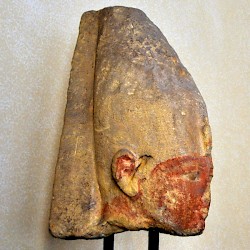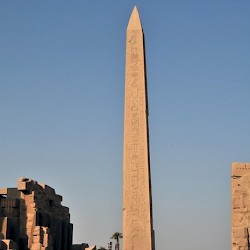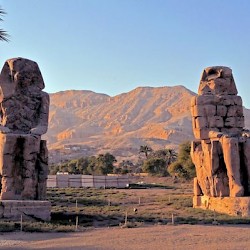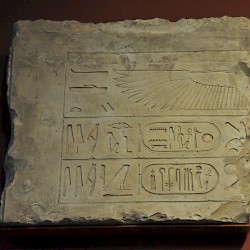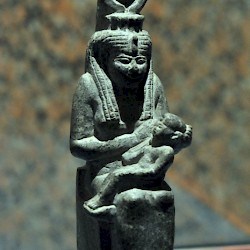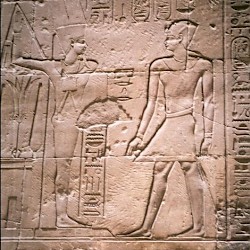This page is a stub. It will be expanded to a full-fledged article.
Thebes (Egypt)
Q189392Thebes (Greek: Θῆβαι): name of several archaeological sites in Upper Egypt (a/o modern Luxor, Karnak, Medinet Habu, Valley of the Kings...).
History
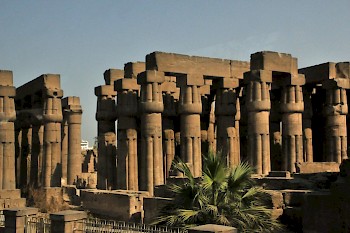
The concept of "city", impractical for the ancient world in general, is especially impractical for the series of settlements known as Thebes - a Greek name, only based on Homer, who thinks that a "Thebes with Hundred Gates" exists in Egypt.note The Egyptians called the site njw.t, "the city", from which the Biblical name No' is derived.note
- City became important at the end of the First Intermediary Period, especially when the Eleventh Dynasty rose to power and reunited Egypt during the reign of king Mentuhotep II, and Thebes became the capital; even when the residence was moved to Lisht in the north, Thebes remained important
- After the demise of the Middle Kingdom, the same happened again: this time, it was the Seventeenth Dynasty, from Thebes that reunited Egypt. The temple of Amun in Karnak now became one of Egypt's most sacred sanctuaries, especially during the Eighteenth Dynasty.
- It lost importance during the Nineteenth Dynasty, but remained importance for royal funerals
- In the Third Intermediary Period, Thebes became an independent temple state; which was, in the Late Period, led by the "great wife of Amun" (the main priestess).
- 664 BCE: When the Assyrians expelled the Twenty-Fifth, Nubian Dynasty, they sacked Thebes as well. The Twenty-Sixth Dynasty (from Sais in the north) fought for Egypt's independence, managed to gain control of the Theban priesthood, and united Egypt
- 525 BCE: According to a very hostile tradition sacked by the Persian king Cambyses.note
- New buildings in the fourth century, when Egypt was independent for the last time
- Local capital of southern Egypt ("the Thebaid") under the Ptolemies
- Insurrections in 206-186 (Horwennefer/Ankhwennefer), 132-130 (Harsiesis), and 91-88 (unknown leader); city sacked by Ptolemy IX Lathyros
- Contemporary description by Diodorusnote
- Favorite place for Roman tourists like the emperor Hadrian (r.117-138)
- Luxor was used as Roman fortress in the age of the Tetrarchs
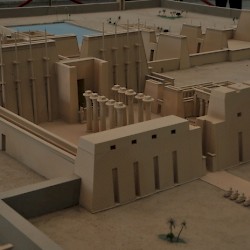 Karnak, Temple of Amun, Model |
 Karnak, Temple of Amun, First Pylon |
 Luxor, Temple |
 Luxor, Temple, Capitals of columns |
Monuments

- Karnak (east bank of the Nile): temple of Amun (with smaller sanctuaries within the temenos), precinct of Montu, precinct of Mut, temple of Aton
- Luxor (east bank): temple of the Theban Triad, site of the Opet Festival
- Deir el-Bahari (west bank): mortuary temple of Montuhotep II, mortuary temple of Hatshepsut
- Medinet Habu (west bank): several other mortuary temples (e.g., the Ramesseum of Ramesses II and the temple of Ramesses III)
- Valleys of the Kings and Valley of the Queens (west bank): royal tombs
- Deir el-Medina (west bank): settlement of the laborers
